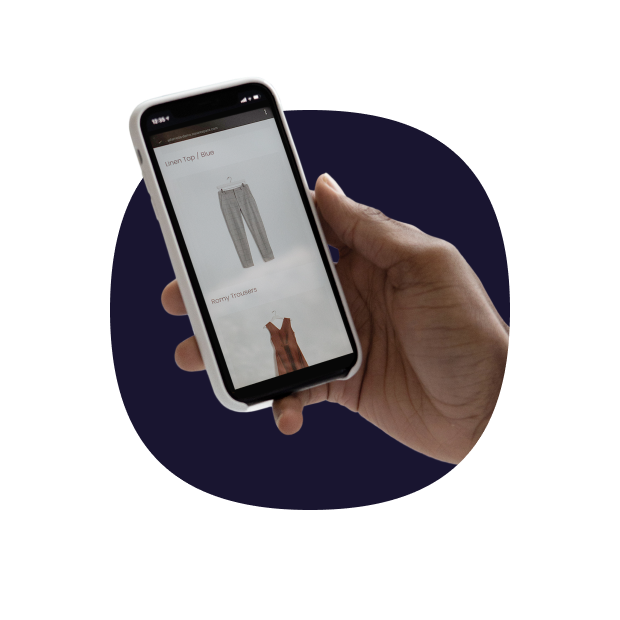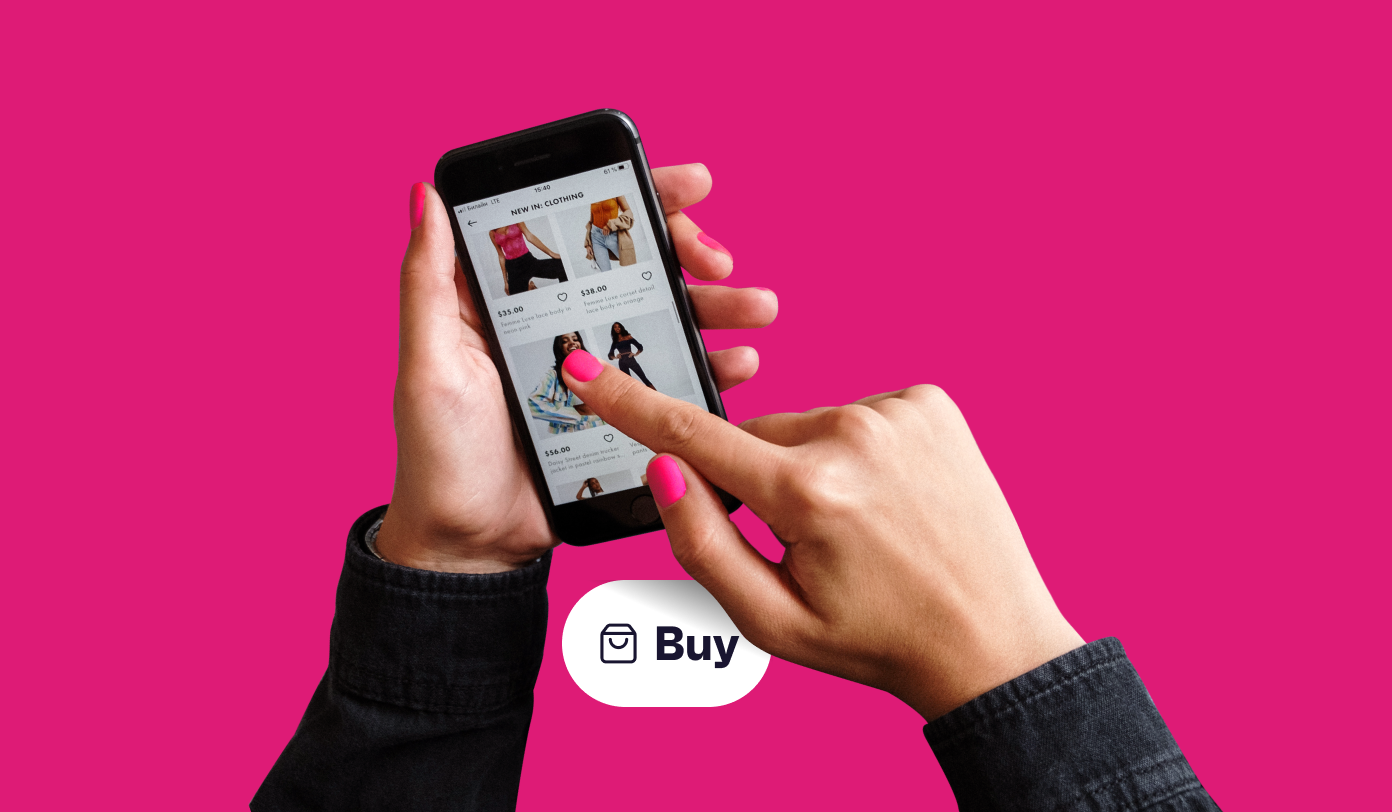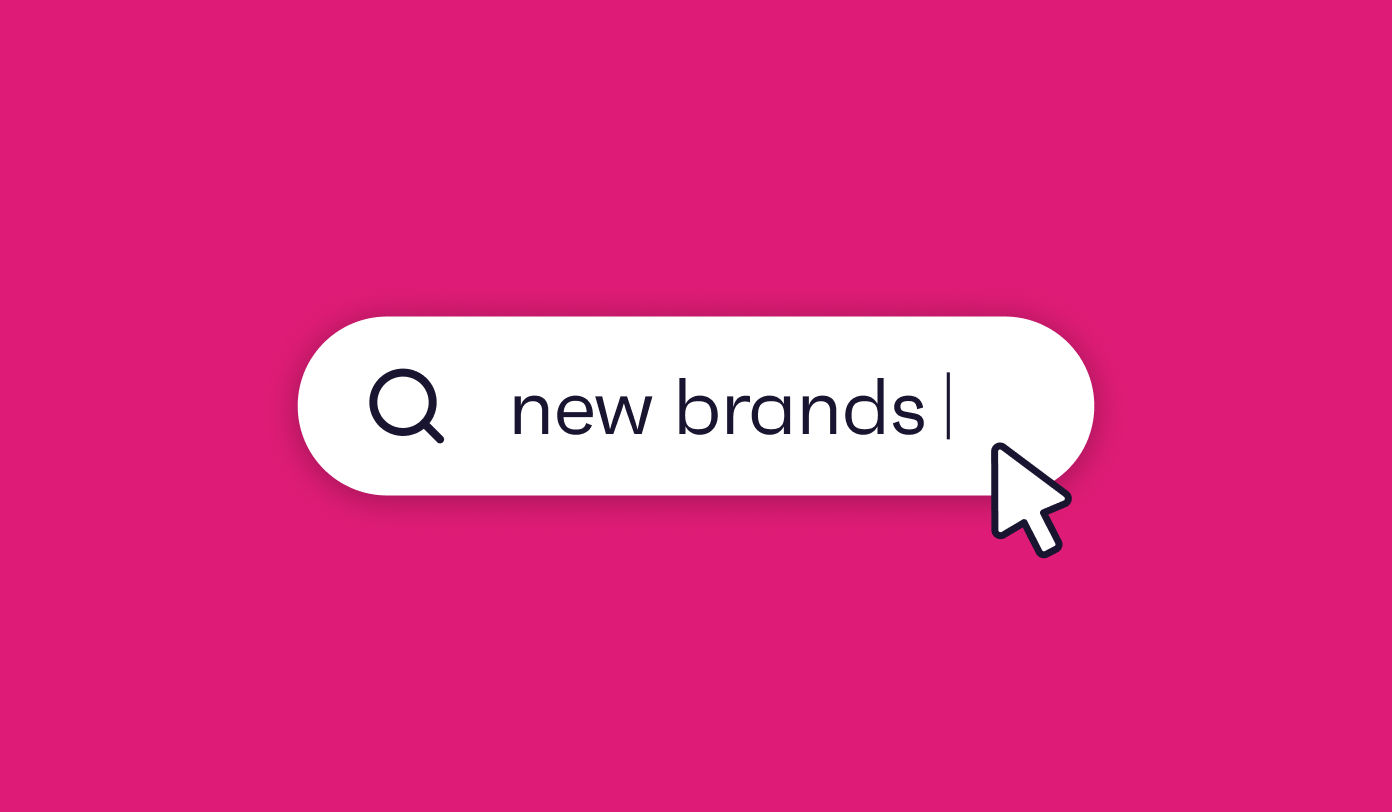Why is media planning so important? We’re glad you asked.
In today’s competitive global media landscape, effective media planning is vital for reducing wasted ad spend while driving brand awareness, engagement, conversions, and revenue – magic words every marketer wants to hear.
Choosing the right marketing channels to share high-performing content is key to media planning success, but that’s easier said than done. It’s hard to make a splash in a fragmented attention economy where consumers jump between multiple devices, and industry research estimates nearly half of digital ad spend is wasted. Missing the mark can have a big impact.
If you’re not 100% sure how to approach media planning, don’t worry, we’ve got you covered. Grab a cup of joe and settle in with our ultimate media planning guide, where we’ll answer:
- What is media planning?
- What is media buying?
- Media planning vs media buying: what’s the difference?
- What types of media planning are there?
- What are the benefits of media planning?
- What does the media planning process involve?
- Which media planning elements should be included?
- Media planning tips: what’s best practice?
- How can GWI optimize your media planning strategy?
Ready to optimize your strategy with quick-win tips and insights that’ll help you turn wasted ad spend into wins? Let’s dive in.
Improve your media planning strategy and drive more ROI from ad campaigns with the right consumer research. Learn how to stop wasting ad spend.
What is media planning?
Media planning is the process of choosing how and where you share content with your target audience. It’s about creating content that audiences crave, and presenting it on the channels and platforms they love.
This includes knowing your target audience, analyzing their media consumption and social media habits, and using these insights to reach them via the right media channels at the right time. Understanding ad effectiveness like this is key to optimizing spend.
On any given week, a media planner could be scheduling a healthy media mix of images, video content, print advertising, and even audio formats like podcasts as part of a company-wide marketing campaign.
The end goal is whatever you want to achieve. Perhaps you want to increase the reach of your social posts on Facebook to raise brand awareness, or boost sales of a new product by creating an engaging new YouTube video, or launch an epic out of home advertising campaign (OOH) that gets people talking about your biz. Whatever the goal, media planning is the perfect way to organize and nail your approach.
What is media buying?
Media buying is purchasing ad space on the media platforms and channels you chose to focus on in your media plan. The goal is to secure the best possible placements, display times, and prices within your allocated budget to optimize ad spend and drive ROI.
This includes negotiating rates at competitive prices, scheduling ads across your chosen platforms, and ensuring they’re placed in the most beneficial positions to drive campaign success.
The media buying process is key to cost-efficiency, which is why it’s crucial to have a deep understanding of both the market and your target audience’s behaviors and preferences. And the work doesn’t stop once the campaign goes live – a good media buyer should monitor ad effectiveness and make tweaks to optimize their impact as needed.
Media planning vs media buying: what’s the difference?
For the avoidance of doubt, there’s a big difference between media planning and media buying. The former lays the groundwork, the latter brings the plan to life.
Media planning is about deciding the best platform and strategic approach for a campaign, while media buying drives that campaign forward and keeps it on track.
Media planners and buyers work together toward the same goal, but their roles and responsibilities differ. While a media planner would be involved in planning a paid media campaign, they wouldn’t spend time negotiating rates for ad space or purchasing media. That all sits with the media buyer.
That said, it’s not uncommon for some smaller firms and agencies to combine both responsibilities into one role, performed by a media-managing mastermind. It all depends on the organization.
So now you know what media planning is, how do you get started? The clue’s in the name: you need a solid media plan.
What types of media planning are there?
Media planning can be broken down into several categories, each tailored to specific marketing goals and target audiences. Let’s touch on a few examples here.
Social media plan
Social media planning aims to reach and engage audiences with paid and organic content on the social media platforms they use – such as Instagram, TikTok, Snapchat, Facebook, LinkedIn, X (formerly Twitter), Reddit, and Pinterest.
Paid media plan
Paid media planning focuses on paid ads or sponsored content across search engines, display networks, social media channels, retail media networks, and other ad spaces worth investing in. The more targeted your campaigns can be, the more high-quality leads and conversions you can generate at a lower cost.
Public relations (PR) media plan
PR media planning is a gateway to earned media opportunities through the likes of press releases and influencer partnerships. Positive media coverage can boost your brand reputation and increase public awareness of products and services, so it’s often worth pitching compelling stories to journalists and influencers to build brand credibility and trust.
Print media plan
Print media planning revolves around traditional media formats like newspapers, magazines, journals, and other printed publications. While we live in a largely digital world, media planners can still make good use of a print media plan to target niche markets or local audiences.
OOH media plan
Out-of-home (OOH) media planning covers billboards, transit ads, posters, and other types of outdoor advertising designed to reach broad audiences in public spaces and drive mass brand awareness. Zooming in on regional preferences or segments within your target audience can help you promote more targeted messages, depending on where you place ads.
Digital media plan
Digital media planning is designed to support online media ad campaigns across multiple channels, from social media and search to display and mobile. Basically, the works. This can be useful to amplify a company’s message and drive brand awareness at scale.
What are the benefits of media planning?
Media planning can significantly enhance your marketing campaigns. Key benefits include:
- Budget efficiency: By choosing the right media channels and optimizing ad placements, you can minimize risk and ensure you don’t waste a dollar of your precious ad spend.
- Improved ad targeting: Understanding your target audience’s channel preferences, media consumption habits, and behaviors helps you reach them with messaging that really resonates.
- Stronger alignment: Having a clear media plan aligns your teams on strategy and objectives, and also helps optimize your brand message for more consistent cross-channel campaigns.
- Better performance: Tracking campaign performance is much easier when you have a clear understanding of where you’re advertising and why, helping you make data-backed tweaks on the fly to improve results.
- More ROI: With the right consumer insights to back your decision-making, you can focus your efforts on the marketing channels your audience actively uses to generate maximum returns.
- Accurate market sizing: Quantifying how many of your target audience sit within a particular market helps you work out both where your next big opportunity lies, and how best to allocate budget.
With so much fresh content and advertising being pushed out every day, and new channels and media outlets popping up every month, media planning helps you laser-focus your marketing efforts so you can stay glued to your audience and strategically target them with engaging content.
What does the media planning process involve?
For most marketers, the perfect step-by-step media planning process looks a little something like this:
- Conduct audience research
- Set your media objective
- Create and roll out a media plan
- Measure your success
Let’s go ahead and explore each of these in a little more detail.
1. Conduct audience research
The media planning process should always start with audience and market research. Why? Because consumer trends give you a view of the current media landscape and how attitudes and behaviors have shifted within your target audience. This happens more often than you might expect.
Getting the answers you need to smash your ad targeting is essential; the alternative is relying on guesswork, which can lead to wasted ad spend and disappointing results. So start by building out your ideal audience with specific attributes or profiling criteria that would make them a relevant target for your brand or product. For example, you could look into:
- Age or generation (e.g. Gen Z, baby boomers)
- Location
- Lifestyle habits
- Attitudes
- Income and job role
- Media and social media preferences
- Marketing touchpoints
- Purchase influencers
- Brand affinity
Specifically, insights like this help you to dive deeper into your target audience to understand their habits and interests, the platforms they’re using, and any relevant consumer trends worth tapping into.
For example, a quick dip into the GWI platform reveals 31% of Gen Z consumers discover new brands and products via social media ads, versus 32% of millennials who find them through traditional search engines.
It’s easy to work strategic consumer insights like this into your media planning process to match who you’re trying to reach. For instance, if you’re targeting Gen Z, consider upping your spend on paid social channels and decreasing search efforts for a more effective campaign.
Once you know exactly what types of media content will resonate with your audience and where to share it, you’ll create a more tailored and effective media plan that drives higher conversions and revenue.
We also recommend doing competitor analysis as part of your wider market research to understand ways to help your campaign stand out in a saturated market. For more strategic tips, check out our blog on how to conduct market research.
2. Set your media objective
Now you know what content will rock your audience’s socks off. What’s next? It’s time to set your media campaign goal, or in other words, deciding on your “why”.
This can be whatever you want to aim for – just make sure it’s clear, specific, and measurable. It’s overambitious (and to be honest, unnecessary) to cover every media platform or channel going, so this is where efficient goal setting can help you narrow down your focus areas.
Consider where your audience is in the marketing funnel, and what action you want them to take next.
You’ll also need to assess how much you’re willing to pay for a user to take that action, and what future value they could provide your business to generate ROI.
Not sure what’s most important? Here are four common aims and focus metrics worth considering:
- Brand awareness: focus on reach, impressions, clicks, likes, shares, comments, total audience growth, cost per 1000 impressions (CPM)
- Quality lead volume at scale: focus on total leads, clickthrough rate, conversion rate, lead to sale %
- Boosting efficiency: focus on cost per click, cost per lead, cost per 1,000 impressions (CPM), ROI/ROAS
- Customer retention: focus on engagement rate, clickthrough rate, revenue, high renewal rate, low churn
For example, you could aim to increase the reach of paid social ads to build brand awareness and engagement, or create an engaging, feature-packed YouTube video to help boost sales of a new product.
Whatever you aim for, consider the time and budget you can commit to setting up, monitoring, and optimizing your campaign. Use data to regularly assess campaign performance and see what is (and isn’t) working.
3. Create and roll out a media plan
By this point you’ve pinned down your campaign goal, you know your target audience inside out, and you should feel confident about the content and channel placements most likely to engage them.
Now it’s time to use quality insights to decide your media mix. Keep your end goal in mind, and prioritize spending budget in your audience’s top hangout spots to minimize risk and drive ROI. Use any leftover budget for guilt-free testing on more niche or experimental platforms, which can help grow your audience.
We recommend including some explainer notes on your approach and any key audience insights you uncovered in the research phase. That way, you can easily share your media plan with your wider marketing team and get everyone aligned on strategy – especially those lovely media buyers who are ready to pick up and run with your campaign.
Explaining your “why” also ensures any content, visuals, USPs, and messaging that need creating will be in keeping with your media plan and overarching campaign goal. Consistency is everything.
Plan perfected? Everyone’s clear on what’s needed? Go on, roll it out.
4. Measure your success
Whether you’re tracking performance daily, weekly, or monthly, it’s always a good time to review and reflect on your campaign by assessing those all-important KPIs. Did you achieve the goal you set prior to creating your media plan? And if not, why not?
Don’t forget to check in with your audience again. It’s likely that while your campaign was running, things have shifted in the market. Any change in consumer attitudes or behaviors could’ve had a big impact on how your media campaign landed, so it’s worth reviewing with your results in mind.
Remember, there’s no set formula for success in media planning. All you can do is keep testing and learning with data, using fresh insights to inform your media strategy and decision-making. The more often you do it, the more impactful your media content will be. Analyze, then optimize – just like you would with any good marketing plan.
Which media planning elements should be included?
What you need to consider for an effective media planning strategy depends entirely on what you’re trying to achieve and how you’re measuring success. But in a nutshell, there are five main media planning elements you should bear in mind:
- Audience: Who you’re targeting
- Content: What kind of media will engage your audience
- Channels: Where you’ll publish content to maximize reach
- Frequency: How often you’ll share content (including times/dates)
- Budget: How much you’re planning to spend per channel
Each element is directly tied to the impact of your marketing campaign and its cost-effectiveness, so they need equal focus when you’re putting together a media plan.
For best results, make audience insights the foundation of every campaign. Knowing what matters to your target audience ensures you ace your content marketing strategy, and helps you decide how, where, and when to place advertising, and how much budget to allocate to it.
Media planning tips: what’s best practice?
As consumer research experts, we know a thing or two about how to ace your media planning strategy. Here are our top tips to get you on the right track.
Know the why behind behavior
And we don’t just mean why an audience enjoys a particular media platform, or finds certain types of digital advertising annoying – we’re talking about the bigger picture. Look into what really drives their actions across the various digital channels they use. For instance:
- Personality types: How would they describe themselves?
- Lifestyle indicators: How do they describe their lifestyle?
- Self-perceptions: Which attributes do they say they have?
- Desires: What do they want for themselves in life?
- Values and opinions: Where do they place their energy and trust?
Automate where possible
Save time with AI-powered research tools, or invest in programmatic ads that deliver targeted results at speed. From scriptwriting to video generation, there are plenty of time-saving AI tools available (like TikTok’s Creative Center), so focus on optimizing their output.
Consider “flighting” or “pulsing” ad strategy
These tactics are great for maximizing exposure on seasonal campaigns, or keeping costs down when you have less budget.
Use consumer insights to allocate budget
Prioritize channels you know your target audience actively uses to avoid wasting spend and drive greater ROI.
Stand out from the crowd
Competitive analysis is incredibly useful and we recommend you do it before creating a media plan. But while it’s great for inspiration and setting the bar for your next campaign, don’t forget what makes your business unique in the first place.
Keep your media plan flexible
It’s a good idea to leave a little room for reactivity. This helps if you need to make adjustments or swap scheduling dates around to fit your marketing strategy as consumer behavior and attitudes change. Remember, new trends and topics are emerging all the time, and you might want to jump on them while they’re hot.
Keep testing and learning
Don’t be afraid to experiment. It’s essential for growth, and helps you boost reach and uncover new audiences. So whether you A/B test one specific variable, or want to run with an entirely new ad concept, work out what you want to know. Try humorous ad copy, a promotional offer, or even consider unusual ad formats – like the lesser-spotted long-form video.
How can GWI optimize your media planning strategy?
GWI is a consumer research platform packed with powerful insights and bespoke solutions to help you plan with precision. How so? Because we take the guesswork out of knowing your target audience – reducing the risk of wasted ad spend, and elevating first-party data to help you make data-backed decisions with confidence.
Curious? Here are five ways you can use GWI to improve your media planning strategy.
1. Audience segmentation
Our data gives you a global and local view of your target markets on demand, so you can see what’s changing and what stays the same. Segmenting your audience will help you speak authentically to each of your customer groups and zero in on what matters to them.
2. Segmentation activation
By syncing your unique audience segments with the GWI platform, our panel partners can model and push them straight into your chosen activation platform. Our bespoke market segmentation solution helps you sharpen your messaging, optimize your spend, and drive ROI at scale.
3. Media consumption
By understanding which channels and platforms your audience uses, and the types of content they’re consuming, you can spend budget with confidence. Check emerging trends in seconds and grab insights across social media, vlogs, podcasts, and other key media formats.
4. Personalization
See which consumer groups prefer personalized ads, and what they’re interested in, for the best chance of hooking them. Our free Zeitgeist data gives you the lowdown on the latest trending topics to help you create timely, relevant ads that tap into consumer needs faster.
5. Brand health tracking
Brand tracking research helps you see how consumers really perceive your brand, and where you stand in the market. Benchmark against your closest competitors, and identify core strengths and weaknesses to shape your media planning strategy moving forward.
With deeper insights into your audience’s lives, you can plan all sorts of media campaigns to engage them more effectively. Infusing your media planning strategy with demographics and psychographics shows you where to find your audience, what interests them, and how to engage with them on their terms. And that, simply, is media planning magic.
The essential media planning guide for better ad targeting
Unlock the guide





.webp?width=495&height=317&name=pink_thumb_graphs%20(1).webp)
.webp?width=495&height=317&name=pink_thumb_letter%20(2).webp)
